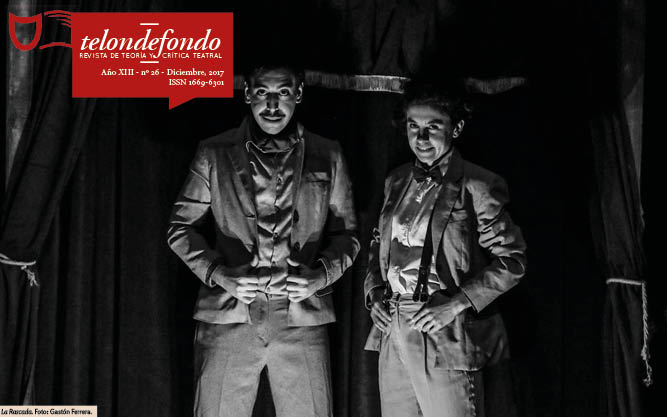"La Rascada", a Metatheatrical Mise-en-Scène that Connects the History of Argentine Theatre
Abstract
This paper analyzes the play "La Rascada, un teatrito de las orillas", written and directed by Andrés Binetti. This strongly metatheatrical mise-en-scène stages a clear reflection on the characteristics of theatrical practice not only during the 1950s, period in which the story takes place, but also in our contemporary context. Metatheatricality appears in the fictional universe, which displays the backstage of a marginal variety theatre and the realities of its artists, and it is also emphasized by the recurrent staging procedure of representation within the representation that regularly confronts the audience with the artistic numbers performed by the characters, thus reinforcing the tension between the past and the theatrical present. In "La Rascada, un teatrito de las orillas", fourteen characters embody some of the varieté stereotypes that played such a significant role in setting of the pillars of Argentinian popular theatre. The characters, topics and references to iconic actors of that time do not only point to the local popular actor through verbal reference, but also through their corporality and acting style, establishing intertextual relations that connect the play with the sainete and grotesco criollo as well.Downloads
Los autores/as que publiquen en esta revista aceptan las siguientes condiciones:
-
Los autores/as conservan los derechos de autor y ceden a la revista el derecho de la primera publicación, con el trabajo registrado con Licencia Creative Commons Atribución-NoComercial-CompartirIgual 4.0 Internacional, que permite a terceros utilizar lo publicado siempre que mencionen la autoría del trabajo y a la primera publicación en esta revista.
-
Los autores/as pueden realizar otros acuerdos contractuales independientes y adicionales para la distribución no exclusiva de la versión del artículo publicado en esta revista (p. ej., incluirlo en un repositorio institucional o publicarlo en un libro) siempre que indiquen claramente que el trabajo se publicó por primera vez en esta revista.
-
Se permite y recomienda a los autores/as a publicar su trabajo en Internet (por ejemplo en páginas institucionales o personales).











